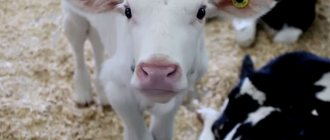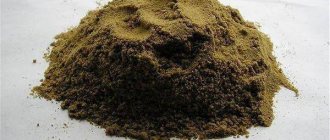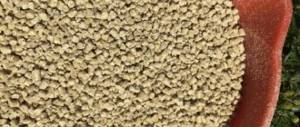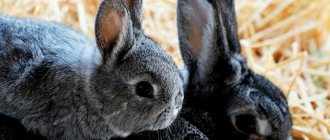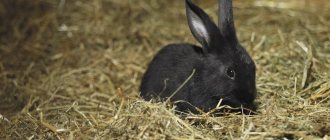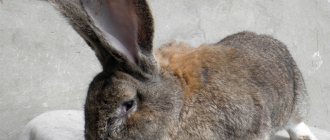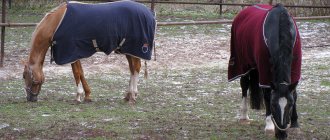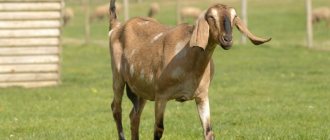Types and composition
Concentrate, or compound feed, is any animal food that contains many useful components, such as carbohydrates, fats and proteins. In addition to the nutritional component, the feed is enriched with vitamins and minerals. Compound feeds are divided into grains, food waste, flour products with their waste, as well as animal and some others. The goat is well fed with the help of a special balanced concentrate, since it contains different feeds.
The goat eats cereals, oilseeds and legumes with appetite. It’s good if they are served to the goat at the same time. Cereals contain the most carbohydrates, oilseeds contain fat, and legumes contain protein. Concentrates of animal origin are represented by meat and bone meal, as well as blood and fish milk, and powdered milk. This product contains a lot of protein and amino acids.
Advice: The optimal diet for goats will be the use of different cereals and other supplementary feeds; their rates must be balanced.
The basis of feed for small livestock is: 71% of the total menu is grain, it is best to use oats, wheat, bran, corn, barley or rye; oil products, represented by meal or cake, need 25 percent; vitamin-mineral nutrition, represented by a premix, salt, chalk and phosphate, needs 4 percent.
Roughage
The definition of “roughage” includes hay and straw, branches of deciduous and coniferous trees. This feed contains the fiber and vitamins necessary for the ruminant animal. Hay should be present in a goat's diet even in summer, in small quantities.
In winter, the rate of roughage per dairy goat is 3-5 kg, depending on the size of the animal. Brooms can replace up to 30% of hay, straw (oatmeal, barley) up to 20%.
Important! When calculating how much hay will need to be prepared for one goat for the winter, the number of days of the stall period is multiplied by the animal’s daily grain consumption, and 30% is added for losses during storage.
Goats are unpretentious animals; they willingly eat hay that a cow wouldn’t even look at. Animals like forest hay, with many twigs and dried flowers. Naturally, the hay should not be rotten or moldy. Good hay is green, aromatic, and not dusty.
In addition to forest hay, the following herbs are prepared for goats:
- legumes (alfalfa, sainfoin, vetch) mixed with cereals (oats);
- Sudanese;
- bonfire, wheatgrass.
Leguminous grass hay is considered the most nutritious; when given, the amount of grain feed for a goat can be reduced by 25-30%.
Important ! It is customary to mow hay at the beginning of flowering. At this time, the grass contains the maximum amount of vitamins and nutrients.
They prepare branches of trees and shrubs for the goats, tying them into brooms and drying them under a canopy. Young shoots of apple and pear trees, hazel, oak, Russian maple, rowan, and linden are especially useful for animals. In winter, from December to February, you can cut pine and spruce branches for goats; they contain vitamin C in high concentration.
Be sure to read:
Alpine goats: description of the breed, productivity, breeding, how to keep and feed
For kids
Little goats, after the third month of life or a little earlier, must adapt to food other than mother's milk. There is a recipe that is ideal in composition for young animals, where the feed is taken into account in a volume of one hundred kilograms.
Kids up to three months of age need (for 100 kg of final product): 13 kg. ground barley, 15 kg. corn crushed into flour, 8 kilos of ground oats, 12 kg. ground wheat and 15 wheat bran, sunflower meal 14 kilos, 5 kg. soybean meal, 3 kg. feed yeast, 12 kg. herbal flour, and a kilogram of table salt, premix, defluorinated phosphate.
Grown-up kids older than 3 months require a slightly different composition and concentration of products: ground barley grains need 30 kilos, ground oats 20 kg, 11 kilos of ground wheat, 16 kilos of wheat bran, 12 kg. sunflower meal, 8 kg. cottonseed meal, 1 kilo each of defluorinated phosphate, salt and premix.
Calculate the cost of supplying goat feed
One of the most common agricultural crops is oats, the benefits of which are highly valued.
Feed grain is the seeds or fruits of cereals and legumes used in the diet of poultry and small animals.
The cattle feeding system must necessarily include a full range of nutrients, vitamins and microorganisms.
For adults
Adult goats should eat in accordance with their belonging to a specific physiological group. Compound feed for goats should include the following ingredients: barley (30 percent of the total volume), oats (13 percent), wheat (12 percent), wheat bran (20 percent), sunflower meal (11 percent), grass meal (7 percent) , feed yeast (3 percent), by percentage of premix and table salt, phosphate (2%).
To prepare 15 kilograms of the mixture according to the recipe for goat queens, you will need barley (4 and a half kilos), wheat (1.8 kilos), bran (3 kilos) and other components. After weighing the required ingredients, they are prepared before serving to the goats.
Compound feed (recipes)
Goat breeders can purchase ready-made complete feed for dairy goats for their favorite animals. It is produced under the OK 80 label. It contains 14% crude protein and metabolic energy of 10 MJ. Some goat farmers give goats feed for dairy cows.
Important! The shelf life of factory-made feed is no more than 3 months from the date of manufacture. It should be stored in a cool, dark and dry place.
You can make feed for goats at home if you stock up on all the necessary ingredients.
For dairy goats (with a daily milk yield of 4 liters), the following mixture composition is recommended:
- barley 30%;
- corn 20%;
- oats 22%;
- wheat bran 11%;
- dry feed yeast 1%;
- sunflower cake 12%;
- table salt 1%;
- premix for dairy goats 1%;
- feed chalk 2%.
Hay is given separately. The factory feed contains grass pellets, so hay is given in small quantities. If it was not possible to collect all the ingredients, the goats are given a mixture of oats, barley and bran in a ratio of 1:1:0.3, supplementing the feed with a premix. Particular attention is paid to grazing goats on forbs, where the animal can find the food it needs.
Preparation
You can feed goats with factory mixtures, but it is better to prepare a menu for the animals with your own hands.
Advice: in general, grain crops are not given to goats. Wheat and corn are crushed, barley and oat grains are flattened.
Flattening and crushing machines are useful on farms. If the goat breeder has turning skills, he will be able to make a device for crushing grains himself. Processed grain feeds are easily digested. Grinding too fine is not required; particles of 2 to 4 mm are sufficient.
Ingredients for feed must be combined sequentially. First, ground grains of different types are mixed, then you will need to add cake or meal. In a separate container, the necessary flour, for example, meat and bone flour, small parts of crushed chalk and a little salt are combined in turn, and a separate premix is added. Then the grain and mineral parts are mixed.
Tip: Any container is suitable for mixing feed: a basin, a bucket, a small barrel, etc. But if the farm has a large herd of goats, it is better to get a mixer and a granulator.
Is it possible to give whey to goats?
If there is whey, they drink it with pleasure too. We offer the whey separately from the water. If there is no whey, then add a little herbal infusion with whey. This infusion is similar to weak vinegar. They drink with pleasure. Our goats love an infusion of honey, burdock, dandelion, and dill. Any grass is suitable for this. If there is a lot of whey, then you can infuse the herb without diluting it with water. For 7 liters of whey, dilute a glass of sugar and add grass to make a full bucket. All this is covered from above with an oak circle. After a few days (depending on the temperature), you get tasty kvass. The strength (vigor) of the drink depends on the aging time. Can be given undiluted. You can pour some of it and feed it to the goats, diluting it with water, and add sugar again to the remaining portion. Repeated fermentation will take place faster.
In our hayfields, weeds and dandelions grow and account for up to 20% of the total hay harvest. We grow dill in beds and dry them in brooms.
Consumption
When a goat consumes grain once a day, or the concentrate is fed to it a couple of times during the week, this leads to digestive problems for the animal. For the daily diet, it is optimal to divide the feed into 2 or three planned feedings. Moreover, the proportions of hay, vegetables and grain mixture required in accordance with the standards are fed together. Goats should have access to fresh water around the clock.
It is better not to feed animals with bulk feed. A concentrated mixture moistened with water is served, otherwise the dust will clog the animal’s food passages and larynx. It is ideal to serve granulated food, which is given already dry. Boiling water is not suitable for steaming feed, as it destroys some of the vitamins in goat nutrition. The water should be warm. After pouring the mixture, leave it for 0.5 hours. The consistency and appearance of the mash is similar to liquid porridge. It is often prepared in cases where the goat is unable to handle the pellets.
Advice: If the goat refuses concentrates, because the animal may not like the smell, or it is not yet accustomed to the new food), they are mixed with the goat’s favorite delicacies, this could be: rowan berries, sauerkraut, grated root vegetables, chokeberries, apples. Aromatic herbs (mint, tansy) can also help.
Compound feed is calculated based on 300 grams per individual, another 250 grams are added to obtain a liter of milk during the day. On average, a dairy goat needs half or a kilogram of concentrate, maximum 2 kilos. The largest volumes of feed are fed to animals that are specially fattened for meat, as well as to breeding males during the heat period. The minimum amount is eaten by single queens without milk yield or with minimal volumes of milk.
Supplements
The menu of dairy goats includes additional products that are not complete food, but only supplement the diet.
This:
- sunflower and soybean cake and meal;
- feed yeast;
- feed chalk, sulfur;
- table salt;
- premix
The cake is rich in fats and amino acids necessary for the animal’s body. It is crushed and added in dry form to the grain mixture. Pay attention to the quality of the product; it should have a pleasant smell of seeds and be black with a greenish tint. Products with signs of spoilage (rancid odor, mold) are prohibited from being fed.
Feeder yeast is nutritious, enriches the feed with protein and B vitamins. It is important not to overdo it with it so as not to cause the goat’s stomach to stop working.
Mineral feed and salt are building products for the goat’s skeleton and aid in the absorption of food. With the milk produced, the animal loses calcium, several grams daily. If you give it the opportunity to replenish this supply, the goat’s teeth and hair will begin to fall out, and it will “sit on its feet.”
On a note. Often, while grazing, goats find rotten stumps and firebrands and greedily eat the dust, coal, or even gnaw on the ground.
This is a signal that the animal lacks minerals. The goats are given salt - lick, enriched with minerals, and put it freely available.
Be sure to read:
Anglo-Nubian goats: description and characteristics, maintenance and breeding, productivity
Premix is a complex of vitamins and microelements developed for a specific type of animal. Premix for dairy goats (Zinka, Zdravur Kozochka) in dry form is added to the grain mixture in the recommended dose.
Binge eating
Underfeeding with compound feed will be a less dangerous mistake for goat farmers than overfeeding. When goats eat excessive amounts of concentrates, it can lead to a variety of animal health problems. If pregnant mothers have eaten too much feed, they are at risk of becoming obese. A goat can suffer for a long time during childbirth. After giving birth, problems with subsequent conception may arise; an obese goat will not be able to conceive.
If the total diet consists of more than 45 percent of mixed feed, and branches and hay occupy less than 55 percent, the animals may suffer from the disappearance of their cud, food is poorly digested by goats, and alternating diarrhea with constipation is possible. This leads to rumen acidosis as beneficial rumen microflora are killed.
The rumen may also become overcrowded. With cicatricial blockage, dry food swells inside the organ. There is high pressure on the rumen, it does not contract, and food cannot be mixed and digested. The feed mass inside the rumen can ferment and rot, and gases are formed. When the body is overfilled with feed, pressure is placed on the diaphragm area, cardiac and pulmonary muscles, and in some cases the scar may rupture.
Precautions when feeding compound feed: how much to give to a goat
With the correct selection of feed mixture, milk yield increases and the quality of life of the animal improves. It is important to understand how much to give to an ordinary individual in order to prevent overfeeding, the consequences of which include obesity (can lead to problems with mating, difficult childbirth) and rumen acidosis (deterioration of digestion, constipation and diarrhea).
The peculiarities of a goat's digestion are such that it is better to underfeed it with compound feed than to overeat it if it is used as the main food.
The most dangerous thing for an animal is an overfilled rumen. When an animal overeats so much that it doubles in size and stops contracting, the food ends up not being digested. There is pressure on the heart, lungs and diaphragm. Anyone without being a veterinarian can understand that an individual has eaten to the point of filling its rumen: it hunches over, groans characteristically, does not allow one to touch its stomach and refuses to eat, and bowel movements disappear.
If it is not possible to seek help from a specialist, first aid should be provided independently:
- massage the scar for 15 minutes every two hours;
- put the goat upright so that burping occurs;
- give an infusion of hellebore and wormwood to drink (1 ml per 1 kg of body weight);
- at least two days of fasting.
It is important to know that too hard food, which is consumed frequently, accelerates tooth wear and destroys protective enamel. Cereals should be crushed or crushed when introduced into feed to avoid problems.
Feeding the goats
During non-breeding periods, producers need to provide the following feed ration:
- 1 kilogram of potatoes or root vegetables (succulent food).
- about 2.5 kilograms of high-quality hay (roughage).
- concentrates in the amount of 300 grams.
In the summer, goats are fed with the same amount of concentrates. A month to a month and a half before mating, the goats are grazed on a pasture with high-quality grass and given 0.85-1 kilograms of concentrates.
| Advice. During the breeding season, breeding goats need carotene. Give them food rich in this provitamin - carrots and rose hips, as well as plant leaves. |
And lastly, pay special attention to the quality of food intended for goats. Sour, moldy and spoiled diet ingredients are not suitable, they can cause illness, lead to miscarriages or sharply reduce the quality of goat's milk!
How to increase productivity?
If a goat does not eat well, you should not expect good milk yield from it. Balanced nutritious feeding will help increase milk production. In summer, good milk yields are provided by pasture green forage - from which animals receive most of the necessary nutrients.
In winter, such food cannot be found, but it will be possible to compensate for its deficiency with hay and brooms prepared in advance from tree branches. But it is important to remember that goats require a varied diet.
Compound feed, fodder turnips, grain and vitamin-mineral supplements have a beneficial effect on milk production. In addition, for better productivity it is necessary to provide animals with constant access to clean, preferably warm, water.
How to plan a diet correctly?
Feeding standards must be calculated based on age, gender, general health, and weight of the animal. But there are general rules:
- a large goat should eat more than a small one;
- an adult animal eats less than a growing goat, but with the same weight;
- a dry goat consumes more feed than a barren goat;
- dairy animals are fed in larger volumes than dry animals;
- A goat that produces a lot of milk needs to be given more food than a goat that produces little.
Goats like variety in their food. This way, they become full faster, gain weight faster and better, and, accordingly, produce more dairy products. Animals are fed only fresh food.
It is unacceptable for goats to eat moldy or rotten hay and low-quality root vegetables. This can lead to the development of various diseases, deterioration in the quality of milk and a decrease in its volume.
An approximate diet is presented for any type of goat during the warm period, taking into account all standards. There is the following amount of food per animal:
| Name | Quantity |
| Steppe grasses on the run | 1.2 kg |
| Meadow grass | 6-8 kg |
| Alfalfa hay | 1-1.2 kg |
| Haylage | 2.5 kg |
| Green oats | 4 kg |
| Oats | 4 kg |
| Meadow grass hay | 1 kg |
The diet in the winter season is slightly different from what is given to animals during the warm period:
| Name | Quantity |
| Alfalfa hay | 1 kg |
| Clover hay | 2 kg |
| Meadow grass hay | 0.5 kg |
| Crushed beets | 2 kg |
| Mixture of ground carrots and oats | 2.5 kg |
| Ground oats | 0.4 kg |
| Ground root vegetables and beets | 0.5 kg |
| Forage cabbage varieties | 3 kg |
On average, one goat eats about 360-550 kg of dry food, 400-600 kg of succulent feed, and 30-40 kg of concentrated feed per year. The minimum value is reserved for young animals and kids, the maximum – for adults.
You need to pay attention to the animal's appetite. If it does not fill up with the volume that the farmer gives it, the portions should be increased. At the same time, avoid overeating, since obesity can negatively affect the volume of milk production. Excess weight is also undesirable during the period of gestation.
